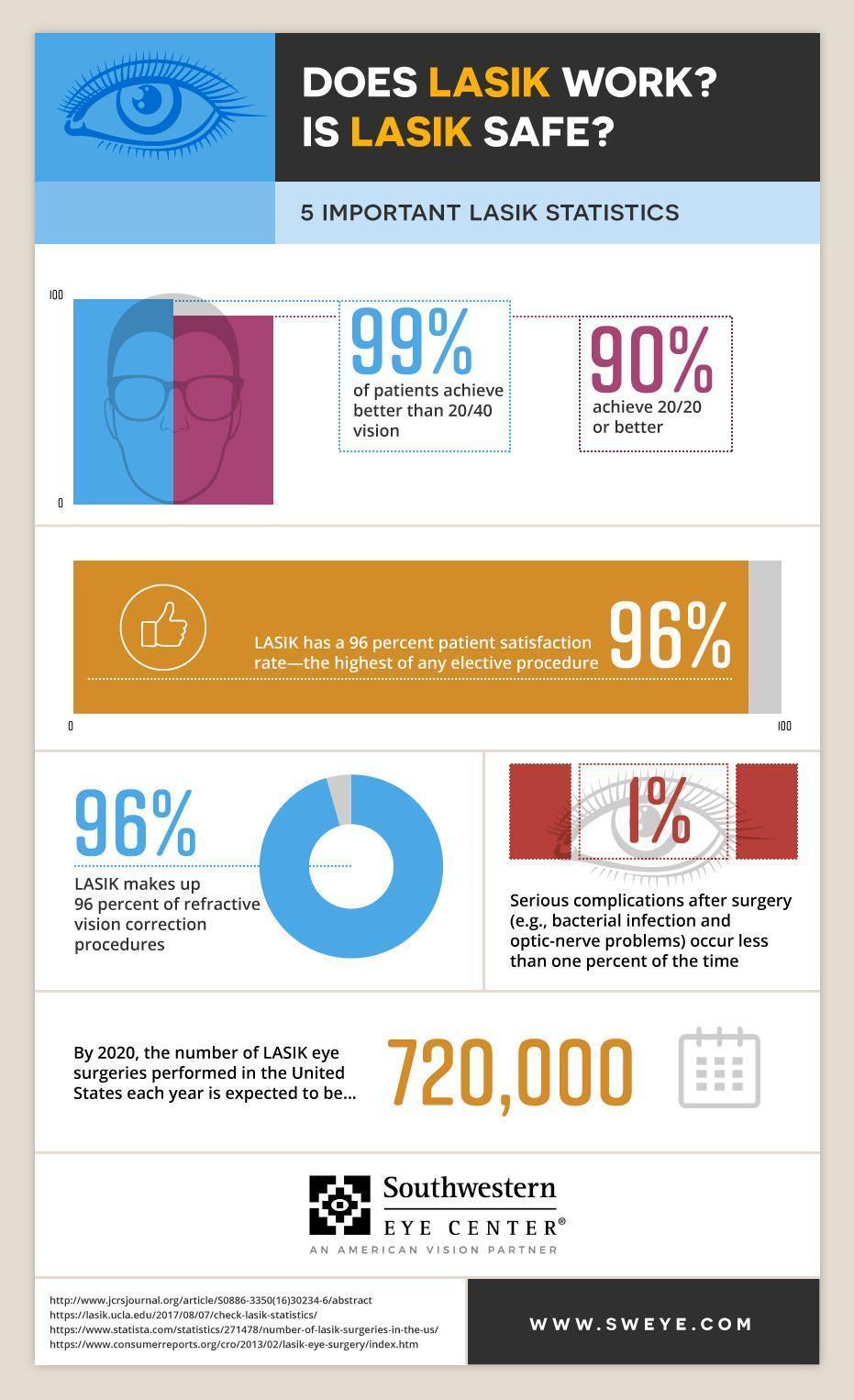What Are The Differences And Similarities In Between SMILE Eye Surgical Treatment, LASIK, And PRK?
What Are The Differences And Similarities In Between SMILE Eye Surgical Treatment, LASIK, And PRK?
Blog Article
Material Author-Dreyer Tang
If you've been thinking about SMILE eye surgical treatment, you could question how it stacks up against LASIK and PRK. Each treatment has its very own collection of benefits and factors to consider. From quicker healing times to prospective dangers, there are vital distinctions you must know prior to choosing. Comprehending these distinctions will aid you make an informed choice that aligns with your certain demands and expectations. Curious to recognize more about exactly how these treatments contrast carefully? Go on exploring to obtain an extensive understanding of SMILE, LASIK, and PRK.
SMILE Eye Surgical Procedure Overview
If you're thinking about SMILE eye surgical treatment, you'll find it to be a minimally invasive treatment with a fast recuperation time. Throughout SMILE (Tiny Laceration Lenticule Removal), a laser is used to develop a small, specific incision in the cornea to remove a tiny item of tissue, improving it to remedy your vision. This varies from LASIK, where a flap is created, and PRK, where the external layer of the cornea is completely removed.
Among the vital benefits of SMILE is its minimally intrusive nature, leading to a faster healing process and much less discomfort post-surgery. The recuperation time for SMILE is relatively fast, with numerous people experiencing improved vision within a day or two. This makes it a preferred option for those seeking a hassle-free and efficient vision correction treatment. Additionally, SMILE has actually been shown to have a lower threat of completely dry eye disorder compared to LASIK, making it a positive option for people concerned regarding this potential adverse effects.
Distinctions Between SMILE, LASIK, and PRK
When contrasting SMILE, LASIK, and PRK eye surgical treatments, it's important to recognize the unique methods made use of in each treatment for vision improvement.
SMILE (Tiny Incision Lenticule Extraction) is a minimally invasive procedure that includes creating a small incision to draw out a lenticule from the cornea, reshaping it to deal with vision.
LASIK (Laser-Assisted In Situ Keratomileusis) entails creating a slim flap on the cornea, utilizing a laser to reshape the underlying cells, and then rearranging the flap.
https://www.healio.com/ophthalmology/refractive-surgery/news/online/%7B0f12434e-4e5a-428b-bae6-ab73ccfb19c3%7D/surgeons-weigh-pros-cons-of-fixated-anterior-chamber-iols (Photorefractive Keratectomy) eliminates the external layer of the cornea before improving the cells with a laser.
The primary distinction lies in the way the cornea is accessed and treated. SMILE is flapless, making it a good alternative for individuals with thin corneas or those involved in get in touch with sports. LASIK supplies fast visual recuperation as a result of the flap creation, but it might present a greater threat of flap-related issues. PRK, although having a much longer recovery period, stays clear of flap-related concerns completely.
Recognizing these variances is essential in selecting the most suitable treatment for your vision adjustment needs.
Advantages And Disadvantages Comparison
To examine the advantages and disadvantages of SMILE, LASIK, and PRK eye surgical procedures, it's necessary to take into consideration the details benefits and possible restrictions of each treatment. SMILE surgery uses the benefit of a minimally intrusive procedure, with a smaller sized incision and potentially quicker recuperation time compared to LASIK and PRK. It additionally minimizes the threat of dry eye post-surgery, a typical side effect of LASIK. Nevertheless, SMILE may have constraints in dealing with greater levels of nearsightedness or astigmatism compared to LASIK.
LASIK surgery gives quick aesthetic healing and marginal discomfort during the procedure. It's very efficient in treating a large range of refractive mistakes, consisting of myopia, hyperopia, and astigmatism. Yet, LASIK brings a threat of flap difficulties, which can impact the corneal structure.
PRK eye surgical procedure, while not as prominent as LASIK, stays clear of developing a corneal flap, decreasing the risk of flap-related problems. It appropriates for people with slim corneas or uneven corneal surface areas. Nevertheless, PRK has a much longer recuperation time and may entail a lot more pain during the recovery procedure.
Conclusion
So, when it involves selecting between SMILE, LASIK, and PRK, think of it like choosing the best set of shoes. SMILE is like a sleek, comfy pair of tennis shoes - quick and simple.
LASIK is much more like stylish high heels - flashy and quickly, however with some possible dangers.
PRK resembles durable treking boots - reputable and resilient, yet needing a little bit more time and effort.
Eventually, Pros And Cons Of Monovision relies on your specific needs and choices.
